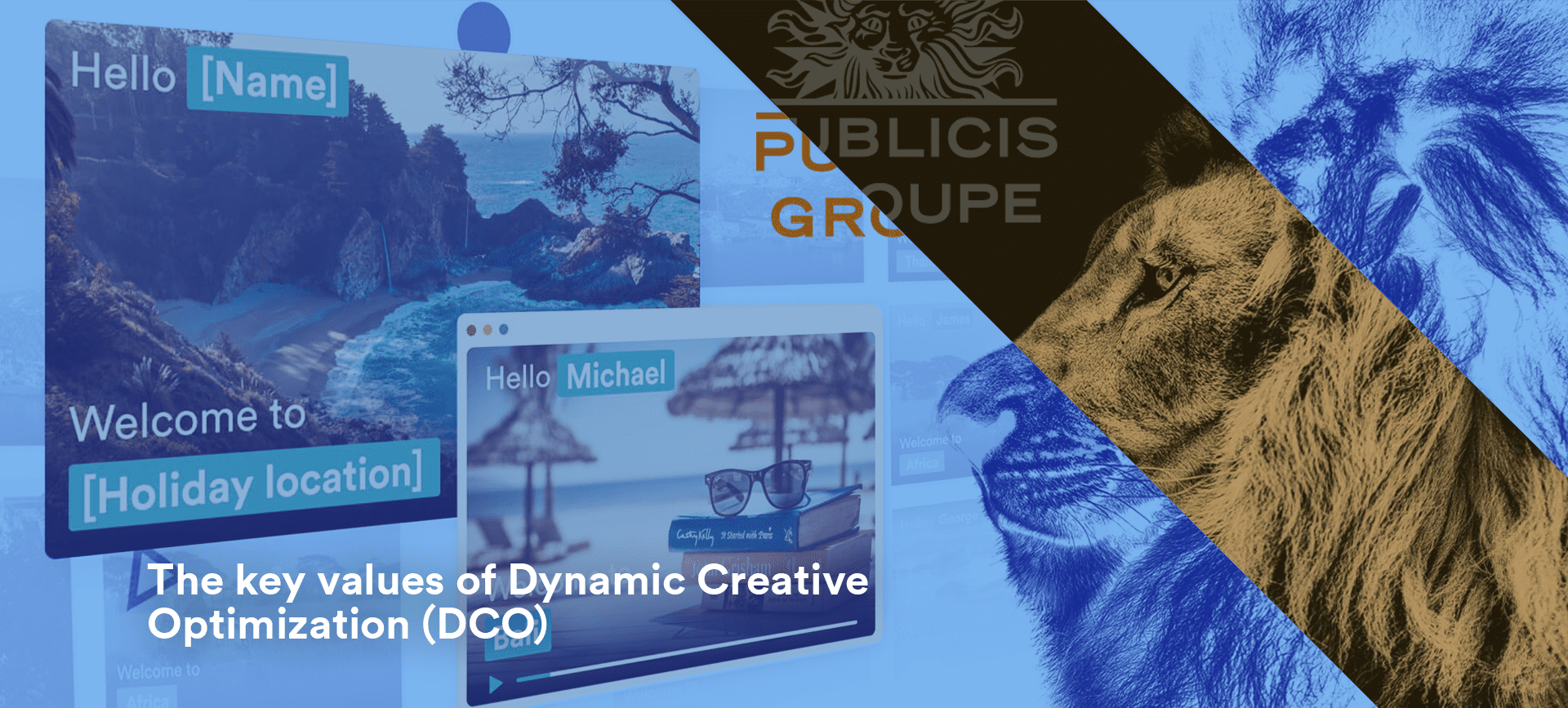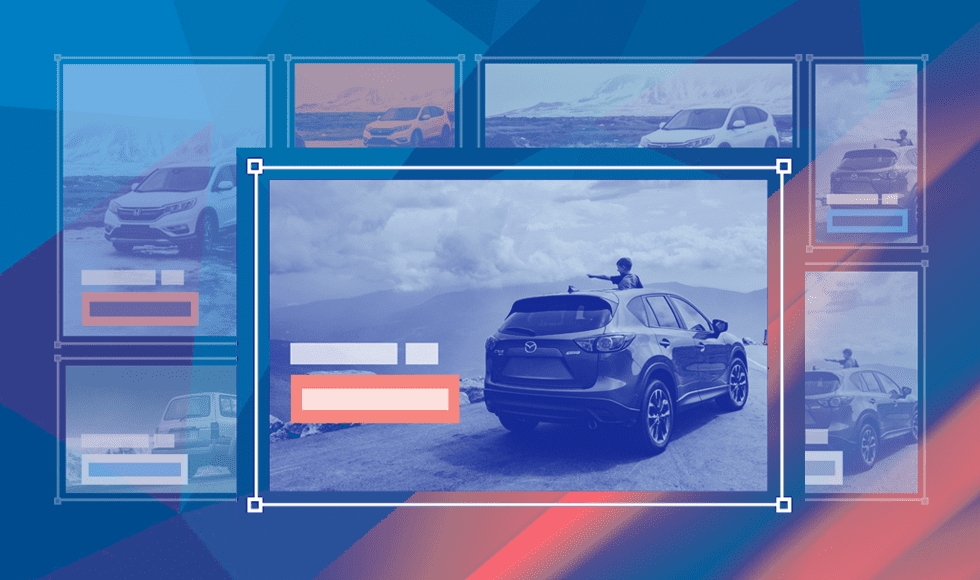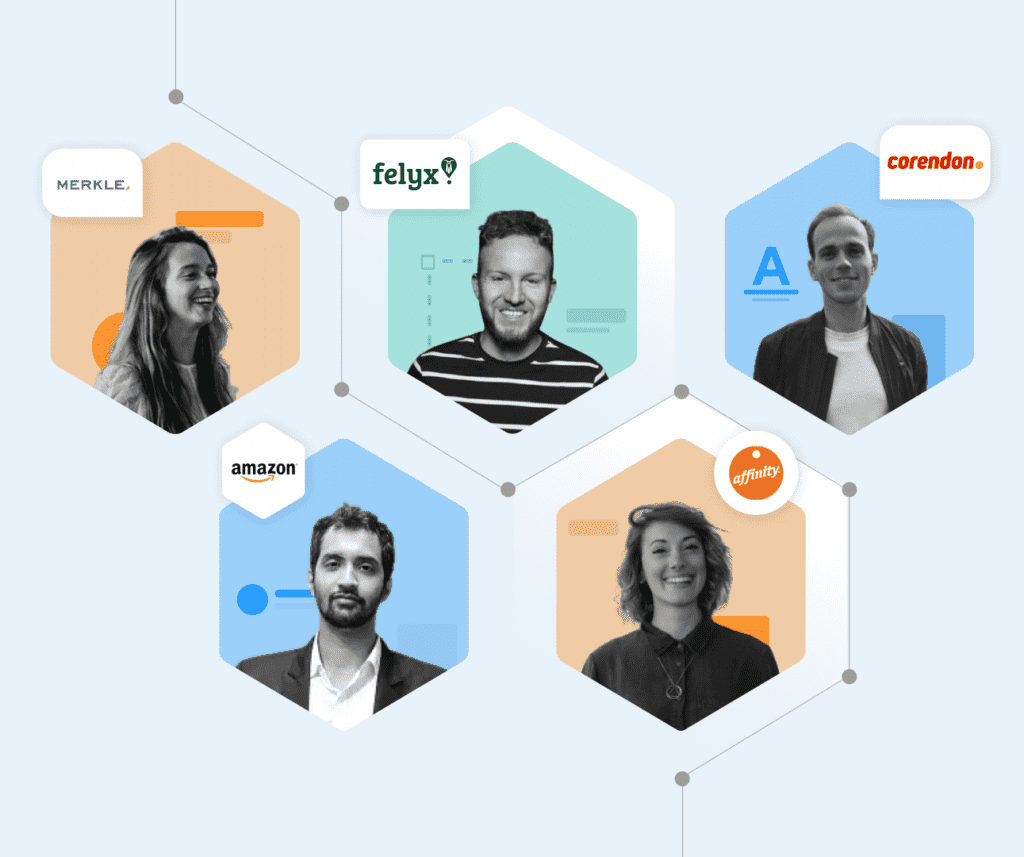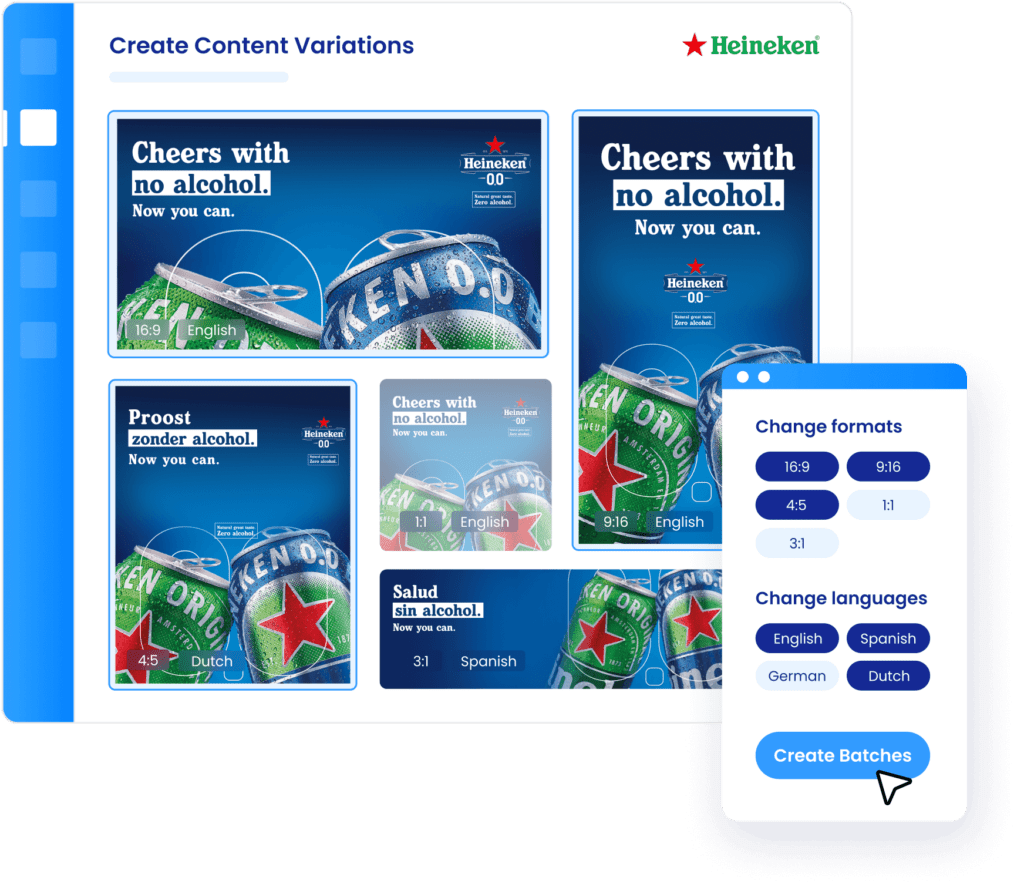Dynamic Creative Optimization (DCO) helps marketers to create, test, learn, and act faster in marketing campaigns. Read more on how DCO brings creatives to the next level with expert insights from the Publicis Groupe.
Today, modern marketing and creative teams need to create content at scale to foster experiences that delight and bring value. Yet, there’s a disconnect between how teams create content and how they connect with the audience.
Getting access to data is becoming more challenging and manually adapting creative assets can take months, usually relying on many design iterations.
To solve this central pain point, the concept of Dynamic Creative Optimization or DCO exists to help you create, test, learn, and act faster in your campaigns. In this past article of ours, you’ll find out what DCO is and how it can effectively be used as a marketing method to create premium personalized content.
Many brands still use generic ads that are shown on loop to generic audiences. The outcome is two common phenomena in the advertising world: ad fatigue and banner blindness. So how can brands upgrade their marketing strategy to tackle these challenges?
In this article, we’ll talk about one such method which is Dynamic Creative Optimization or DCO and why you need to use it.
Meet Dynamic Creative Optimization (DCO), a way to automatically create personalized content
In advertising, Dynamic Creative Optimization rapidly builds multiple iterations of an ad using the same base creative, while tailoring parts of the ad based on audiences, context, and past performance.
Dynamic Creative Optimization (DCO) combines ad creation with analytics: selecting, and optimizing dynamic creatives to better resonate with your audience.
“DCO enables you to have multiple use-cases with test and control approaches that show significant difference in performance in engagement as well as on-site activities.”
Brian von Mansfeldt, Head of Data, Analytics & Insights at Publicis Groupe

Every day, consumers engage with brands on numerous channels, hence each touchpoint is an opportunity for your brand to deepen your relationship with consumers. A successful DCO strategy will seek to do exactly that by meeting customers where they are with relevant content.
Historically advertisers have used Dynamic Creative Optimization (DCO) to re-advertise to consumers a product they’ve previously viewed. However, savvy marketers are more increasingly using this method to employ relevant messaging and improve creatives with relevant insights.
But while sub-par attempts at personalization can give the practice a bad rap, this type of technology is becoming more sophisticated every day. New advancements in machine learning and AI are making personalization more relevant, less intrusive, and less noisy to consumers.
“Any brand that thrives for personalization in their omni-channel marketing activities should consider DCO. The reason is you enable your brand to have a better connection with your customers through relevant advertising.”
Brian von Mansfeldt, Head of Data, Analytics & Insights at Publicis Groupe
Brian’s team had multiple use-cases with test and control approaches that show significant difference in performance in engagement as well as on site activities.
And through a DCO strategy, they achieved creatives that can adapt dynamically at every touchpoint of the audience’s journey.
According to Brian, the misconception around Dynamic Creative Optimization is that marketers may not be aware that real DCO sits within the ad server itself:
“There are only a handful of tools that have the ability to link back impressions, clicks, leads, or sales data to the creative platform to optimize against the best performing ads. And there is only one platform I know of that is also able to generate new ads based on that performance with minimal human intervention.”
Brian von Mansfeldt, Head of Data, Analytics & Insights at Publicis Groupe
While Creative Automation is the technique of creating many creatives in a short period of time, some platforms integrate activation tools directly, while others require a traffic team to upload the creatives still.
“The big difference is that true DCO ad servers have the creative auto-optimization built in, whereas Creative Automation tools rely on the algorithms of the media buying platforms such as social, display, or video channels.”
Brian von Mansfeldt, Head of Data, Analytics & Insights at Publicis Groupe
Why use Dynamic Creative Optimization?
There are numerous benefits for brands to undertake DCO, primarily because it:
- Enables personalization at a granular level
- Improves performance by identifying valuable audience groups and the combination of creative elements that resonate best with each group
- Fosters creative flexibility as dynamic ad templates can be customized so advertisers have control over how the brand is conveyed and experienced by the consumer
Your audiences may have different interests and behaviors which are segmented and each segment receives multiple creative combinations that the team lays out in the content matrix. So it’s no surprise that Brian’s team approach at Publicis is customer-centric based.
“Our process starts with insights about customers and potential consumers we identify as growth audiences.”
Brian von Mansfeldt, Head of Data, Analytics & Insights at Publicis Groupe
How DCO works relates to the fact that the creatives underpin a hypothesis in which you can add a base or test group to understand the true effort of DCO and impact of the campaign.
For Brian, the learning agenda could boil down to the simple question: “Does personalization impact performance versus baseline performance?”
“Any brand that wants personalization in their omni-channel marketing activities should consider DCO. The reason is you enable your brand to have a better relationship with your customers through relevant ads.”
Brian von Mansfeldt, Head of Data, Analytics & Insights at Publicis Groupe
The Dynamic Creative Optimization layers
To get started, you need to be aware that there are two levels of DCO you can consider: dynamic and static. Here’s a look at what each of these entails:
Dynamic ⚡️
Dynamic DCO refers to pre-made creative variants that feature specific data-based elements which are selected and controlled by an algorithm. This type of DCO is easy to set up and allows you to serve up optimized, engaging ads featuring rich media.
Pro tip: To create dynamic videos at scale, Creative Management Platforms (CMP) that focus on native video have the capability to render large amounts of versions of your ad with the click of a button.
Static 💡
Static DCO refers to the static ad units that use an algorithm to “decide” which creatives are shown to your target audience. Unlike dynamic DCO, this uses static creative templates, which put a cap on the number of variations you can serve.
Static versus dynamic banner ads
Static ads have been around since the beginning of online advertising, and as the name suggests, they feature a static or non-moveable image. Dynamic creatives, on the other hand, deliver a richer experience by featuring multiple products, images, and motion.
What’s more, dynamic ads are highly personalized and tend to have a much higher conversion rate.
When creating an ad, you can set criteria that you want to be dynamic, such as the product displayed, price, Call To Action, or discount. Since these ads change based on consumer behavior, they’re more personalized, increasing the likelihood a person will visit and interact with your brand.
The ultimate DCO would be combining dynamic creatives, pushing them to an ad channel, and automatically serving them, getting the results of each creative and using that as an iteration on your creatives.
DCO has a manual or automatic aspect of using your results on your ads to iterate on your creatives again.
Dynamic creatives versus Dynamic Creative Optimization
There are a lot of misconceptions surrounding the two terms so it’s important to differentiate between the two. First, dynamic creatives describe the process of dynamically assembling a collection of components that make up an ad. This could include its headlines, descriptions, backgrounds, overlay text, featured images, video, and so on, based on an individual user’s particular needs.
Dynamic Creative Optimization, takes it a step further by pulling from a variety of connected data feeds, using historical data, along with real-time testing and analytics to continuously improve the ad performance.
It’s important to note that DCO’s responsive feeds don’t change the individual elements used to generate an ad. As marketers, we still get to write the headlines, descriptions, and Calls To Action, and designers conceptualize the graphics, images, and videos, etc.
But through enhanced personalization and customized ad environments, DCO can improve consumer engagement and boost high-value metrics like click-through and conversion rates. Ultimately, DCO-generated ads tend to be more effective than traditional static ads.
The result is a double benefit: better performance and increased consumer trust and recall of your brand.
How Dynamic Creative Optimization changes the way your brand works with content
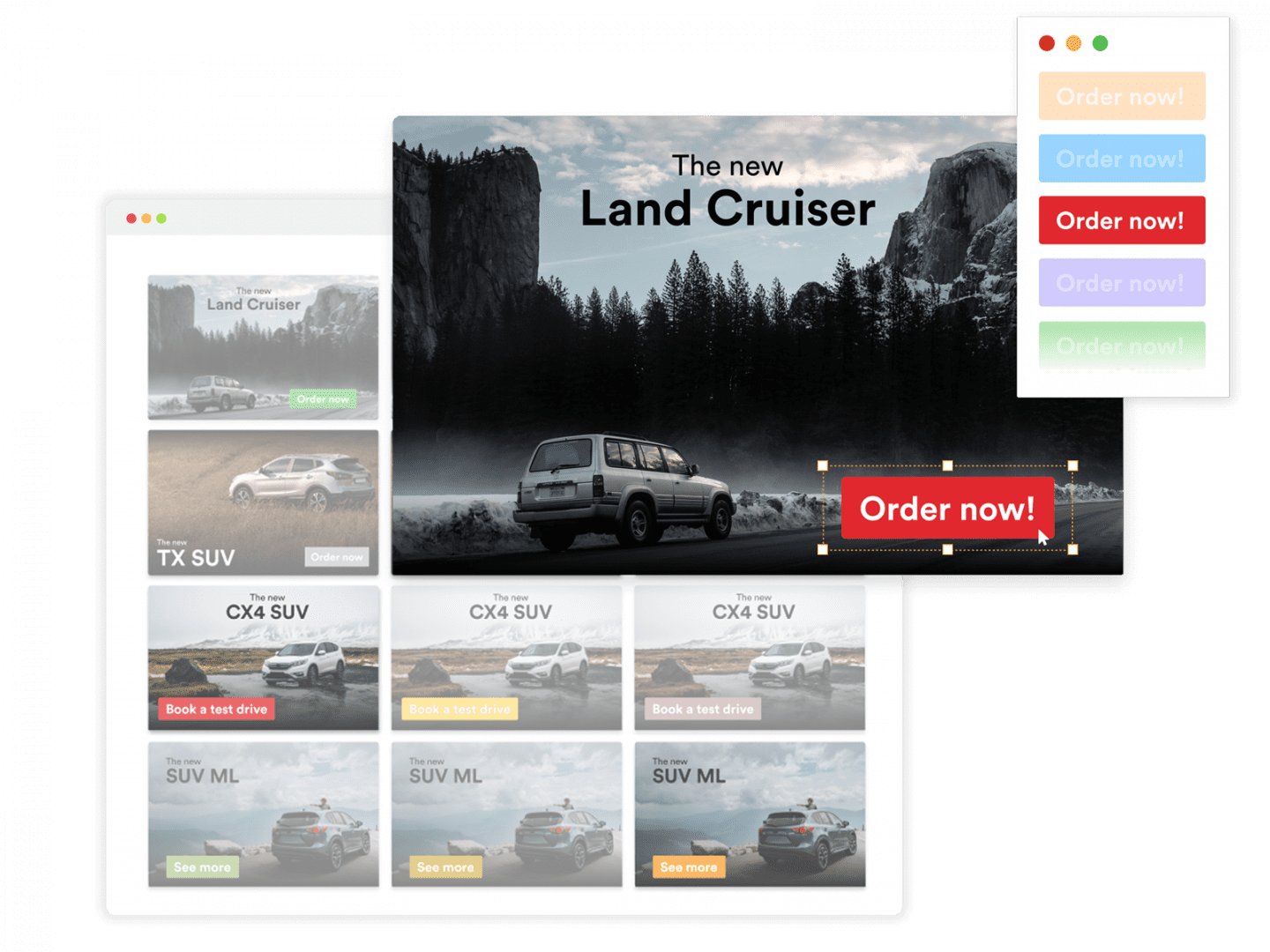
For Brian, DCO helped his team test a personalized message versus a standard message on a landing page for a Samsung campaign.
“The results showed us that having a personalized message does impact site engagements and therefore this was the start of a long relationship with Samsung on DCO activity.”
Brian von Mansfeldt, Head of Data, Analytics & Insights at Publicis Groupe
To create a winning strategy, let’s continue by looking at why DCO is a win-win for everyone and consider some of the other benefits DCO offers.
Remain agile to changing conditions
Using Dynamic Creative Optimization, your brand can change its message quickly to remain sensitive to changing external conditions, as many have already done to address current events like COVID-19.
The upside? Brands that use automation to create multiple ad variations can drastically cut down on production time, allowing them to deliver in-the-moment ad content in the right context.
Reduce cost through automation
To personalize an ad’s message to an individual based on the time, day of the week, season, or language, how many versions of the ad must the brand create to stay relevant? As budgets shrink and demand grows, this manual and time-consuming process just isn’t realistic anymore.
By harnessing automation through DCO technology, brands now have the possibility to drastically reduce the number of resources they dedicate to ad creation.
Increase ROI through personalization at scale
Today, personalization has to go beyond retargeting and be more about understanding the mindset of your audience based on their online behavior and actions.
For instance, we recently talked to Aishwarya Bhavsar, Marketing Manager at Move Snapp, on the alternative of trafficking multiple individual ads by leveraging dynamic creative ads.
“The option that I swear by and recommend is the dynamic creatives and/or Dynamic Creative Optimization,” shared Aishwarya. These solutions support true ad personalization and are highly scalable.
Dynamic creatives are basically built off of one main creative template that resonates with your brand identity; think logo, brand colors, etc. This one base creative is then adapted into various ads using interchangeable components via feed/data sheet. These dynamic creatives are flexible yet consistent in the way they look and feel, hence delivering ads that resonate with the target audience.
“Sky’s the limit when it comes to delivering ads with targeting and creative combinations using dynamic creatives,” pointed out Aishwarya.
The key to heightened ROI is by harnessing DCO, because your brand can deliver a personalized message through hundreds of thousands of ad variations and in real-time.
Achieve better engagement and reach through testing at scale
The fact that ad blocking and privacy laws are on the rise sends a clear signal that consumers are demanding better ad experiences. Advertisers now have access to deeper audience insights than ever before and DCO allows advertisers to deliver relevant and engaging ad experiences.
But not just any ad will cut it. If you adhere to multivariate testing best practices and ask the right questions before running a test, you’ll learn what types of changes are actually worth your time.
“We work with standalone assets which we add in the feed and insert in the DCO shell/template to create a banner on the fly. We only traffick one creative shell which contains 3000+ variations that sit within the creative shell.”
Brian von Mansfeldt, Head of Data, Analytics & Insights at Publicis Groupe
Finally, generating dynamic ads allows you to develop and leverage many unique ad creatives while ensuring your ads are relevant to each person. Every marketer has run A/B testing and had found out that certain elements about A are different from B, and those can make creative A work better. And it’s only natural that the more variations you can explore, the more likely you are to find winning ads.
Put another way, if you run the same kinds of ads all the time, you’re going to get the same kinds of results. This is why creative variety is so crucial.
Wrapping up
Most marketers know that personalization is the most powerful way for your ads to stand out, especially in the noisy digital world of today. If your ad isn’t customized to what a consumer wants at a particular moment, it’s becoming essentially invisible.
Consumers are engaging with brands across multiple devices and digital channels and they’re expecting a personalized, consistent, and compelling experience. To keep a competitive advantage in an increasingly demanding advertising market, DCO is one of the truly reputable ways forward.
Brian von Mansfeldt from Publicis Groupe, the third largest communications group in the world, is responsible for both Spine & Epsilon as head of both departments.
At Publicis, the Spine department is divided into three data-savvy teams: Insights, Analytics, and Technology Activation, each containing specialists in their field.
On Technology Activation, Brian has been working with data-driven and dynamic creatives for the past 5 years and became passionate about the combination of creative/media and technology coming together.
We thank Brian for his contribution to this article.

